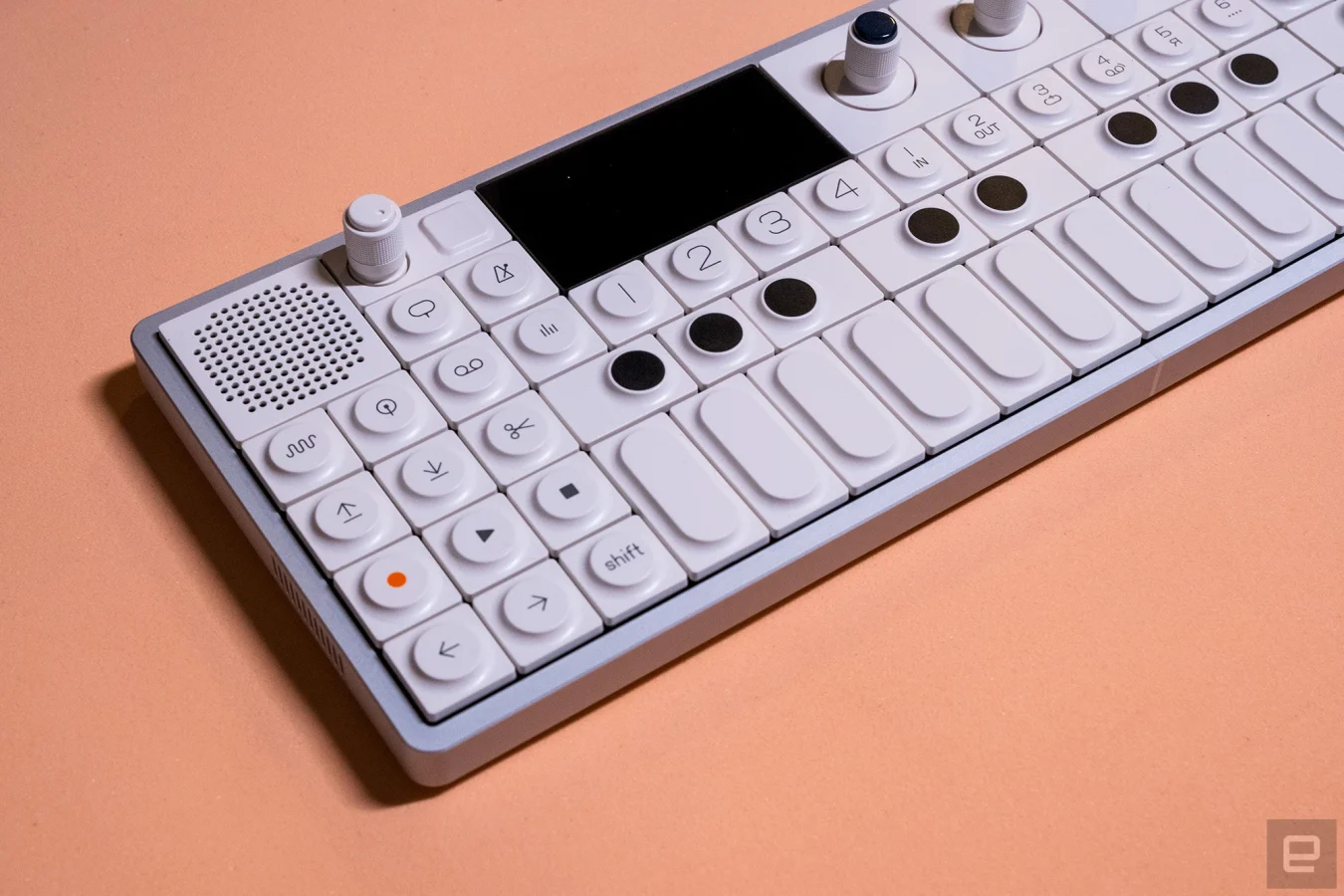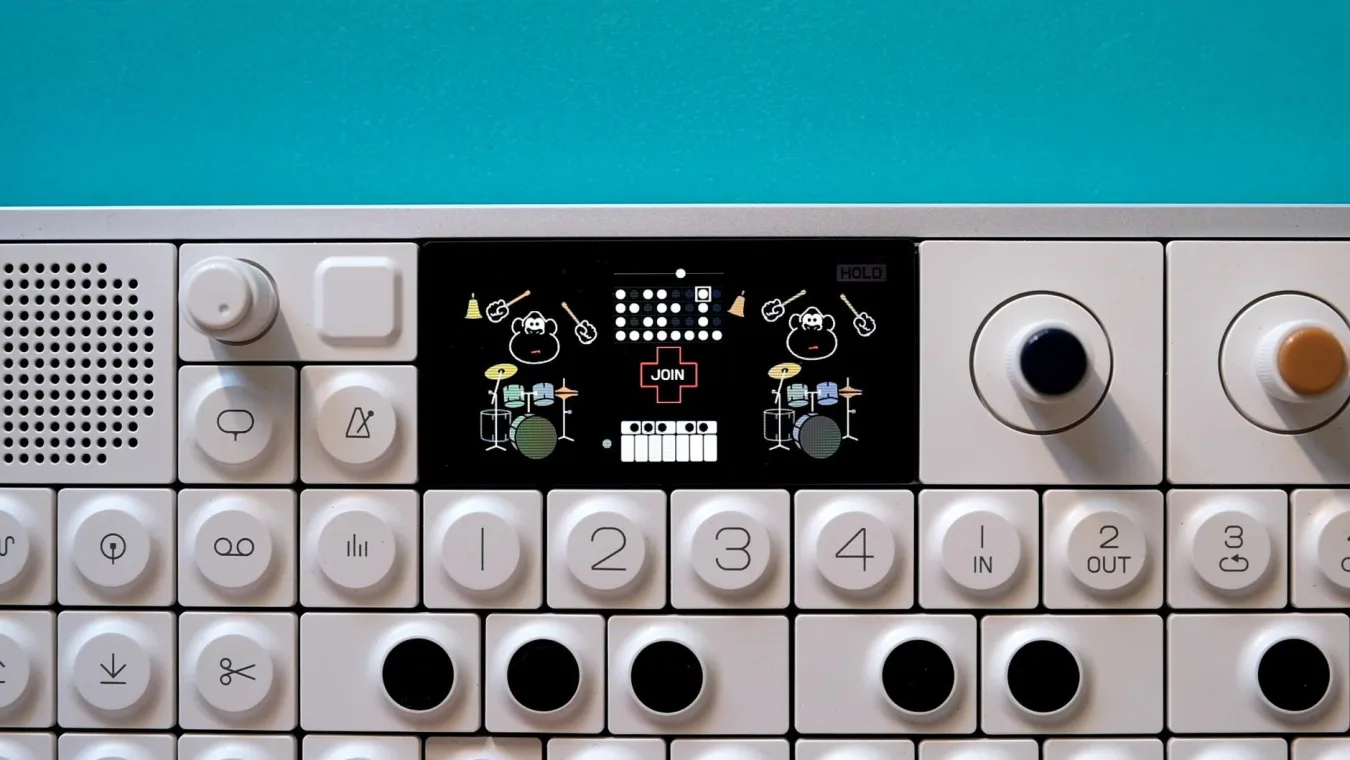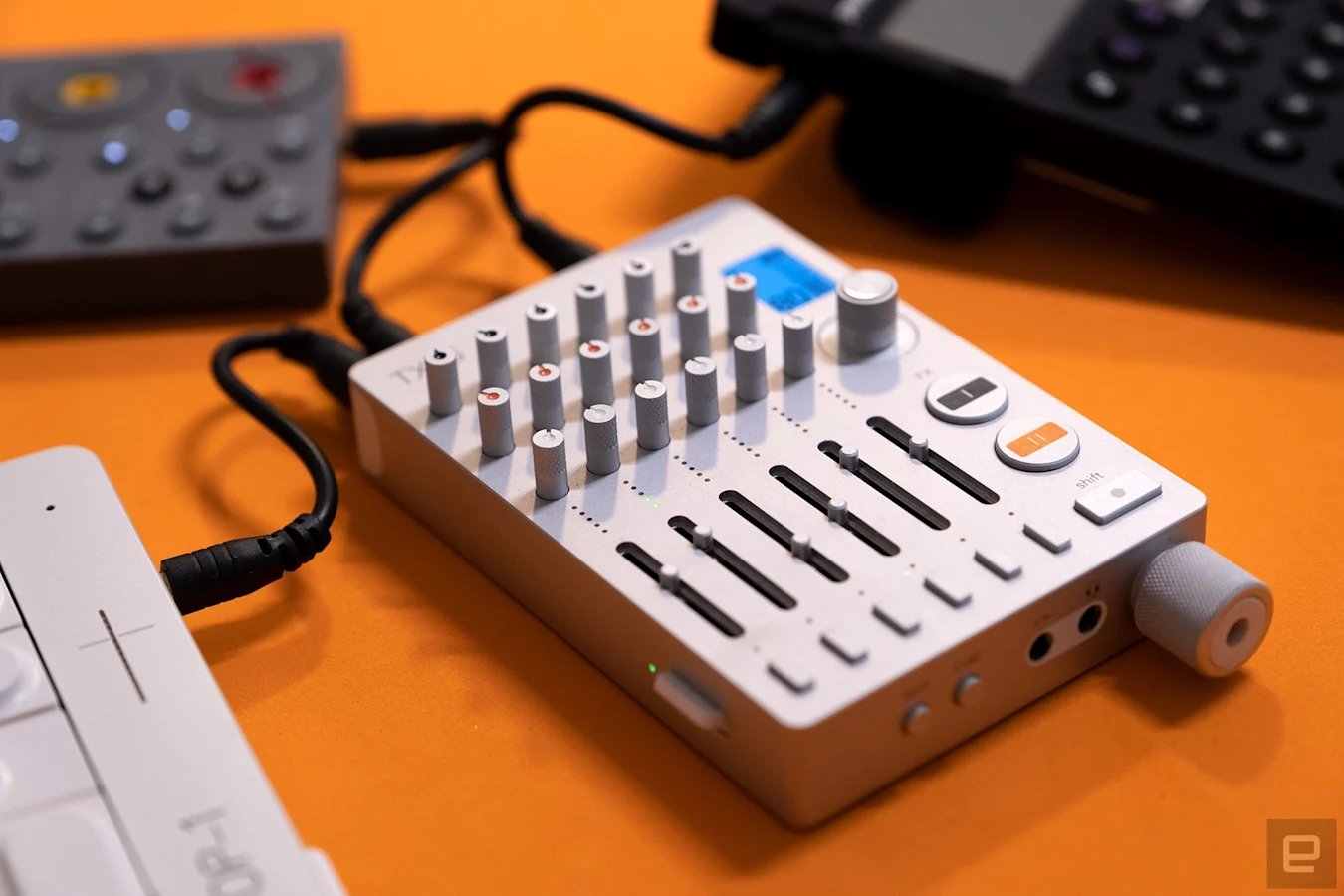Teenage Engineering’s latest ‘Field’ products are testing customer loyalty
Ten years ago, Teenage Engineering made a splash with the quirky, “boutique” OP-1 synthesizer. The b-word gets quotes because the OP-1 would go on to be a huge hit, enjoying a 10 year run and several re-stocks along the way. The success of the OP-1 and the equally unique products that followed saw big brands lining up to collaborate in the hope that some of that design magic might do wonders for their own products. Today, Teenage Engineering’s unique style can be found in everything from adorable gaming consoles to living rooms and pant pockets across the globe.
Back here in 2022, the company recently unveiled the sequel to the synth that started it all – and it’s called the OP-1 Field ($1,999). The new “Field” line also includes the TX-6 mixer ($1,199) and it looks like the company is repositioning itself with a new design aesthetic and… price range. Teenage Engineering has always charged a premium for its genre-bending, playful design but given that the original OP-1 cost around $800 at launch and that the OP-1 Field is largely based on it, it’s understandable that some loyal fans are feeling a little… priced out this time around.
Perhaps the bigger question is, will the new Field series offer enough magical music dust and Nordic design delight, to not only justify the expense, but to also keep Teenage Engineering’s unique approach to making music relevant to new and existing artists alike?
@Random Mcranderson (YouTube) – I think what TE missed is the overall negative effect on their reputation this has had.
Introducing the TX-6 and OP-1 Field
Before we can try and understand “Field” and what it means for the company, we should probably get a feel for the latest two products that are dividing fans in comments sections and on forums. We’ll start with the TX-6 as that’s an entirely new product for Teenage Engineering.
In the most simple terms, the TX-6 is a tiny battery-powered mixer and audio interface. Despite its diminutive size it has six stereo inputs, a built-in synth, eight effects, “DJ mode”, an instrument tuner and wireless/Bluetooth MIDI control. For something as portable as a deck of cards, that’s quite impressive. The TX-6 could be your main desktop audio interface by day and the beating heart of your hyper-portable (or not) multi-synth studio by night.
James Trew / Engadget
Unsurprisingly it’s particularly well suited for connecting and mixing smaller studio gear. Not only Teenage Engineering’s own products, but Korg’s Volca range or Roland’s many compact synths and drum machines are also a good fit. Ultimately, anything you can wrangle into a 3.5mm line-level output is fair game here. Anything with either an XLR connection or that requires phantom power is going to be a challenge of course. For outputs there are: main, aux and “cue” (for DJ mode).
@Pretty.mess (Gear Space) If I had enough money to buy one of these, I would probably buy something else. But I do love TE and the built in sequencer and synth looks interesting.
As is often the case with Teenage Engineering products, there are some features that one might not normally expect. On the TX-6 that would be the synth engine that includes drums sounds. Without a MIDI controller you can’t play it chromatically, but it’s unusual to see creative tools like this in most mixers and provides a way to poke out ideas right on the device. The inclusion of Bluetooth MIDI really feels in keeping with the portable form factor and a recent firmware update allowed for recording the mixer’s output directly to USB drives, which means you can lay down tracks without even needing a phone to record into. One might argue some internal storage could have been included for the price, but we presume the density of the hardware doesn’t allow for it (we hope).
The OP-1 Field, on the other hand, is very clearly a successor to the decade-old OP-1. The launch was sold as the new synth being “100 times” better with a list of 100 new features or improvements. In practical terms, the main upgrades seem to be much improved on-board storage, new “tape” modes (more on this later), full stereo signal chain, a new synth engine, a new reverb effect, an improved display, longer battery life and 32-bit float recording.
@Tarekith (OP-Forums) not everything needs to be aimed at the lower end of the market. This is a massive update for an already very capable instrument.
With the Field, the OP-1 has been refreshed to bring it up to date after a decade of user feedback. And this includes squashing some long-held limitations of the original. Most notably, the ability to work on multiple projects on the device without the hassle of backing them up to a PC. Yep, the original OP-1 only had the ability to record one song (or more accurately, one “tape”) at a time. Another big one, particularly for the synth and drum engines, is the introduction of stereo.
To show this off, there’s a new synth engine called “Dimension.” It joins the other 10 that were on the original (which already covered most bases). Dimension is a subtractive/analog-style synth with a variable waveform (it gradually changes from various pulse styles through sawtooth and then noise).It also has a chorus feature for a fuller stereo sound. It does a pretty good job of replicating more analog style sounds as well as lush pads and even some horns and wind instruments.
With so many different synth engines you’re not short of choice, but the OP-1 is sometimes considered as having quite a colder, digital sound. This is true to a degree, but – as with most things on this synth – there are creative ways to get around that if you know where to look.

James Trew / Engadget
Instead of there being an internal sequencer, Teenage Engineering decided to imitate recording to tape on the OP-1, with just four tracks, including a physical time limitation of six minutes for each track. The analogy is taken seriously with no “undo” or “copy/paste” instead you “lift” tape and you can drop it back elsewhere. There are modern concessions so that it’s not just about making life needlessly hard – instead it’s a very different way of making music that urges you to build songs in a way that most software’s infinite options and endless tracks ironically doesn’t.
But it’s precisely this unusual approach, anachronisms like “tape” and imitating physical limitations in a digital environment that arguably makes Teenage Engineering products stand out. Most electronic music production these days likely happens in software on laptops. As computers became powerful enough to mimic outboard gear, often the only hardware you might see producers using was a MIDI controller for playing software instruments with. In the last decade, at least, there’s been a steady re-emergence of hardware at the center of the workflow. But most don’t employ such a restrictive workflow as the OP-1.
@ellisedwardsx (Reddit) Love it. Everything cool about Op-1 to me but minus the things I didn’t like. I love the new additions.
“It favors those that have playing skills” YouTuber and OP-1 expert Cuckoo told Engadget referring to the OP-1’s live tape recording approach. “Like if you want to be incredibly immediate, and you appreciate that, then it’s for you,” he added.
Cuckoo, like many fans of Teenage Engineering, sees the lack of things like a MIDI sequencer or the ability to add and remove effects at any stage in the creation process as a good thing. A typical DAW lets you move single notes around or change almost anything at any time which “feels” more useful (and it’s how most modern production tools work). The OP-1, for example, is just a lot more committal. Once that idea is recorded to tape, you’re limited in what can be done with it. But for some, that’s what makes it so exciting. Everything you do nudges you forward in the song-making process or, at the very least, avoids you jamming away several hours as you trawl through VST presets as often happens in something like Ableton Live.
“Teenage Engineering, they’re very good at minimizing your options, and in a good way. Like on a computer, everything is possible. But because everything is possible, it’s not like one optimized workflow. You need to find that workflow for yourself. And most people probably don’t create like, a tight workflow.” Cuckoo said.
While this alternative way of working does have its fans, it can almost feel like learning a new language if you’re used to a more conventional DAW+MIDI situation. This will likely mean, at the beginning at least, you’ll almost certainly spend as much time googling for answers as you do actually creating. Before long though, you’ll start noticing the exciting things you can do that your faithful old DAW may never have put in your mind (even if it’s something it can do).

James Trew / Engadget
Take the built-in FM radio on the OP-1, for example, as Cuckoo illustrates. “Sometimes I’ve been performing with an OP-1, and been sampling from the FM radio, chopping up a [drum] kit, making a song, making an improvisation in like, maybe seven minutes or so?” Making a song based on sampling the radio in under 10 minutes is not something most gear inspires you to do.
Most don’t have an FM radio to be fair.
You can also use that radio in other, weird creative ways. You could use it to modulate an LFO, for example (so the song on the radio is controlling a filter or other parameter). Or you can create synth sounds using a random FM sample looped and twisted in creative ways. You can also broadcast over FM (albeit incredibly short distances), which works perfectly with Teenage Engineering’s OB-4 speaker, which also has an FM receiver.
@finc (Reddit) But what is a tiny low powered FM transmitter for?
This is really where Teenage Engineering excels: adding playful touches that open creative opportunities you might not find elsewhere. Along with the FM radio, the OP-1 Field has a gyroscope that can also be used as a modulator, which makes it exciting for live performances.
And while MIDI Bluetooth LE is becoming more common, it makes so much sense in the portable form-factor of both the TX-6 and the OP-1 Field. Using the TX-6 wirelessly with the OP-1 Field was easy to setup and felt very natural. In fact they both play nice with iOS natively too, so if you have a suite of mobile apps you enjoy using already, you can carve out quite a capable mobile studio with a good mix of hardware and software alike.
Using the OP-1 Field together with the TX-6 does feel decadent. The 3.5mm inputs on the mixer naturally makes you think twice about what you might plug into it. I could plug a full-size synth into it, or maybe something like the MPC Live II, but this would also be a bit bizarre. A relatively comprehensive mixer it might be, but its size begs you to, well, take it outside we suppose?
“I think ‘Field’ leads my mind to think about field recordings and to be out in the field, work outside of the office… music that is portable. And I think it’s very obvious especially if you look at the TX-6 mixer […] this thing is so incredibly well designed. And it’s hard to convince people that get angry when they see the price tag that how incredibly well engineered it is.” Cuckoo said.
@Brokener Than (YouTube) The personal aspect of buying the OP-1 and what you get out of it is really the only justification you need to overpay for an instrument.
But if portability is the key behind the “Field” moniker, Teenage Engineering has to convince people to part with thousands of dollars when there are apps and even mixers that can combine to do something similar for a fraction of the price.
“A lot of people say, well, ‘you can do all of this with Ableton Live and a computer that costs half the price!’ But it’s not the point. It’s, I think, if the result is all that counts, the end product you can do a lot of stuff with an iPad, and some apps are free even. The result is not everything, it’s also mastering a device. Like, playing this live is a joy.” Cuckoo said.

James Trew / Engadget
Take a look around on YouTube at who is actually using the OP-1 or the TX-6. If you look (and listen) long enough you’ll maybe start to see that there has maybe long been a corner of the music making world that doesn’t feel at home with the pads of an MPC, or the endless expandability of Ableton Live. A group that doesn’t want to get pulled into the world of modular synthesis or circuit bending. People that have a fondness for alternative methods but with an appreciation for well-designed hardware. As long as they have the means.
It’s hard not to get sucked into the OP-1 Field. I personally struggled with the workflow initially, but I find it curious. Something tells me that if I stick with it and break my old MIDI/DAW habits, great rewards await. The TX-6 mixer on the other hand is a harder sell while still somehow incredibly appealing. Especially if you are already flush with portable gear, it makes a lot more sense. Perhaps the important question is: What is next in the Field series. An OP-Z Field? Some high-end Pocket Operators? Something completely different? Whatever it is, it could be the company’s most crucial device yet, or what ultimately alienates the company’s loyal fan base.
All products recommended by Engadget are selected by our editorial team, independent of our parent company. Some of our stories include affiliate links. If you buy something through one of these links, we may earn an affiliate commission.
For all the latest Technology News Click Here
For the latest news and updates, follow us on Google News.
